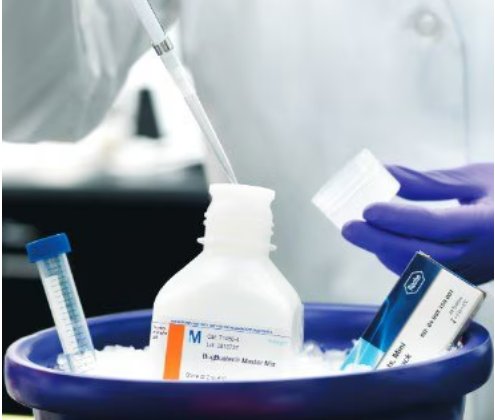 首页>
生物试剂
首页>
生物试剂
商家描述
售后服务
商家资质信息
产品评价(0)
Double-stranded RNA-specific adenosine deaminase (UniProt: Q99MU3; also known as EC: 3.5.4.37, DRADA, RNA adenosine deaminase 1) is encoded by the Adar gene (Gene ID: 56417) in murine species. ADAR catalyzes the editing of adenosine-to-inosine (A to I) by deaminating genomically encoded A-to-I in double stranded RNA (DsRNA). A-to-I editing predominantly occurs in noncoding, repetitive elements and short interspersed nuclear elements (SINEs). A-to-I editing affects gene expression and function in several ways, including mRNA translation by changing codons and hence the amino acid sequence of proteins. It also affects pre-mRNA splicing by altering splice site recognition sequences; RNA stability by changing sequences involved in nuclease recognition; and genetic stability in the case of RNA virus genomes by changing sequences during viral RNA replication. In mammals three different ADAR proteins have been described: ADAR1, -2, and -3. ADAR1 is shown to be expressed during embryonic and postnatal development and is present predominantly in the nucleus. Highest levels of ADAR1 are reported in brain and spleen and lowest levels are observed in liver. Five different isoforms of ADAR1 have been reported that are produced by alternative splicing. Isoforms 1 and 2 (long forms) are predominantly found in cytoplasm and shuttle between the cytoplasm and nucleus. Isoforms 3 and 4 (short forms starting at Met-519) are exclusively found in the nucleolus. Under normal conditions long forms are dominant, however, under conditions of inflammation short forms are selectively induced. (Ref.: Liddicoat, BJ et al., (2015). Science 349 (6252); 1115-1120).,官网链接:https://www.sigmaaldrich.cn/product/mm/mabe1790
默克
科研、开发、生产。
作为生命科学行业的全球领先供应商,我们致力于为科研、生物技术开发和生产,以及制药药物疗法开发和生产提供各类解决方案和服务。
 会员登录
会员登录.getTime()%>)
 购物车()
购物车()

 成功收藏产品
成功收藏产品
